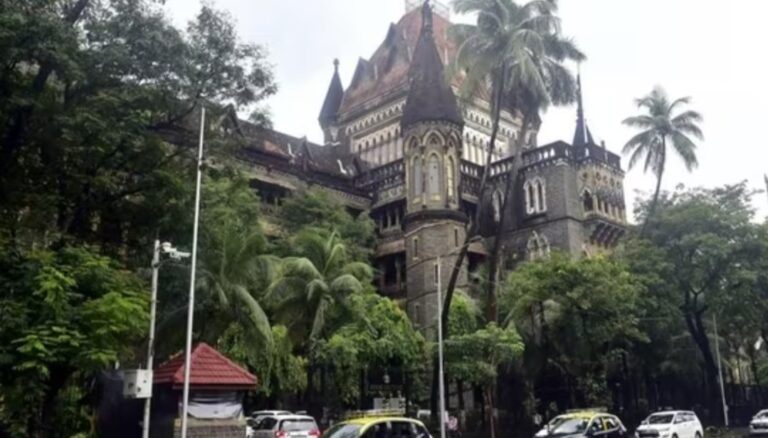The Bombay High Court, in its recent decision dated 12 September 2025 in the case of Vaibhav Maruti Dombale v. Assistant Registrar, ITAT, addressed an important question concerning the scope of the Income Tax Appellate Tribunal’s (ITAT) power to recall or rectify its own orders under Section 254(2) of the Income Tax Act, 1961.
The Court ruled that the ITAT cannot recall or modify a concluded order merely because a subsequent judgment of a higher court has taken a different view on the same issue. The High Court emphasized that rectification under Section 254(2) is confined strictly to correcting mistakes apparent from the record, not to revisiting matters based on later developments in law.
This ruling came in the backdrop of the Revenue’s attempt to reopen a final ITAT order in favour of the assessee, relying on the later Supreme Court judgment in Checkmate Services Pvt. Ltd. v. CIT (2022). The High Court quashed the ITAT’s recall order, reaffirming the principle of finality of judicial decisions and drawing a clear line between rectification and review.
In essence, the judgment underscores that subsequent judicial pronouncements cannot justify the reopening of final orders, preserving the stability and certainty of adjudications made under the law as it stood at the relevant time.
Facts / Background
- The assessee, Vaibhav Maruti Dombale, filed return for Assessment Year 2019-20.
- In the assessment, employees’ contributions to PF/ESI claimed under section 36(1)(va) read with section 43B were disallowed under an Explanation added by the Finance Act (2021).
- On appeal, the ITAT (in its order dated 5 September 2022) allowed the assessee’s claim, holding that the amendment (Explanation 5) applied prospectively and could not be applied to AY 2019-20. The ITAT relied on existing precedents (e.g. Alom Extrusions (SC), Ghatge Patil Transport (Bombay HC)) which supported that view.
- Subsequently, the Supreme Court in Checkmate Services Pvt. Ltd. v. CIT (2022) rendered a judgment that altered the legal position on that issue.
- The Department (Revenue) filed a Miscellaneous Application (MA) under section 254(2) of the Income Tax Act, 1961, requesting the ITAT to recall its 2022 order, on the ground that the later Checkmate judgment showed that the Tribunal’s earlier view was erroneous.
- The ITAT, accepting the MA, recalled its earlier order and dismissed the taxpayer’s appeal.
- The assessee then approached the Bombay High Court by writ, challenging the ITAT’s power to recall its earlier final order in light of a subsequent judicial decision.
High Court Decision & Ratio
The Bombay High Court (Division Bench — Justices B. P. Colabawalla and Firdosh P. Pooniwalla) delivered its judgment on 12 September 2025, holding (in effect):
- Section 254(2) / Rectification Powers Limited to Mistakes Apparent from Record
The Court reaffirmed that the power conferred on the ITAT under section 254(2) is analogous to the limited review under Order 47 Rule 1 of CPC (Civil Procedure Code). In other words, the tribunal may rectify only a mistake apparent on the face of the record. A “mistake apparent” refers to something that is obvious from the record itself, without needing argument or re-evaluation of the merits. A subsequent judicial ruling (which was not extant or binding at the time of the original order) cannot be regarded as a mistake apparent from the record. - Subsequent Judicial Decision Is Not a Valid Ground for Recall / Rectification
The Court held that a subsequent decision of a higher court (or coordinate bench) cannot by itself be a ground for recalling or rectifying a tribunal’s earlier final order, if there was no error apparent in the original order as per then-existing law. Because on the date the ITAT passed its original order (5 Sept 2022), it had applied the law as it stood. That the law was later changed does not show there was an error at that time; hence, it cannot justify undoing the past order. - Distinction from the Saurashtra Kutch Stock Exchange Case
The High Court distinguished the Saurashtra Kutch Stock Exchange Ltd. (SC) precedent, where the Supreme Court allowed rectification because the tribunal had failed to notice a binding precedent already in existence at the time of the order. In Saurashtra, the error was in failing to apply a binding law extant then (i.e. an omission). That is different from the present case, where the “error” is based on a law that was not yet laid down. The Court emphasized that Saurashtra does not authorize recall based on subsequently overruling judgments. - ITAT Exceeded Jurisdiction
The High Court held that by recalling the earlier order relying on Checkmate, the ITAT went beyond its jurisdiction under section 254(2). The recalled order (dated 17 Sept 2024) was quashed. The original 2022 order in favour of the taxpayer was restored. However, the Court clarified that this decision does not prevent the Revenue from filing a valid appeal (if permissible) against the original 2022 ITAT order under section 260A. - Writ Petition Allowed
The Court allowed the writ petition, quashed the ITAT’s orders under both section 254(2) and section 254(1) (to the extent they recalled/modified the earlier decision), and directed that the original relief given by ITAT in the 2022 order stand revived.
Legal Implications & Observations
- This judgment is being viewed as a landmark pronouncement on the limits of rectification powers of ITAT, reinforcing the principle of finality of judicial decisions once an order is passed in accordance with the law as it stood then.
- It places a boundary: one cannot “rewind” a concluded case simply because a later court changed the law.
- The Revenue, in such a situation, must resort to ordinary appeal channels (if available) rather than via recourse to section 254(2).
-
The distinction from Saurashtra Kutch is critical: Saurashtra is about non-consideration of binding precedent existing at the time; it does not stand for the proposition that a later decision can be used to revive a past order.
